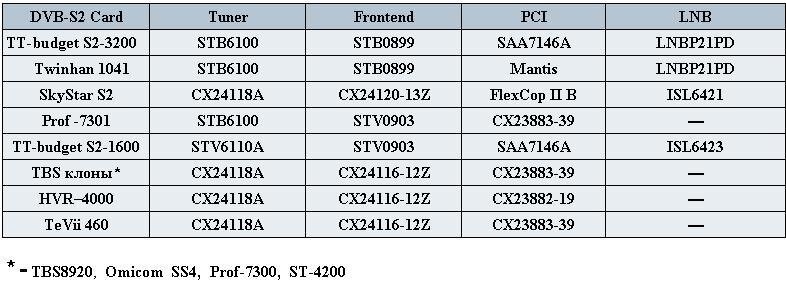Being as this existing thread has evolved into something quite different than where it started, and the title isn't terribly apropos, I'm beginning another here as a follow-in in the more appropriate sub-forum.
To recap, Prof has introduced a series of PCI/USB/PCIe tuners based on the STV0903 chip. This should provide improved capabilities for S/S2 demodulation than previously available. Perhaps even more interestingly, the Linux driver has many capabilities that suggest this chip could provide a decent PC-based blindscanning function. SatelliteAV has announced they are going to be supplying this unit, which up until now was only available for direct import from Hong Kong.
I imported the 7301 (PCI) and 7500 (USB) units and have done some quick testing in Windows with both DVB Dream and DVB Viewer. While I haven't run a stressful set of signals through yet, on the surface both the 7301 and 7500 are doing better on high rate signals than my other PC devices (DVB World 2104 USB and TechnoTrend S2-3200 PCI). I will continue working with these on Windows, but I'm switching my emphasis towards Linux in search of the holy grail of PC-based blindscanning.
Many thanks to tester239, who in the previously mentioned thread was the one originally making the connections between the blindscanning capabilities of the STV0903 and also the inclusion of this chip in the new Prof tuners.
To recap, Prof has introduced a series of PCI/USB/PCIe tuners based on the STV0903 chip. This should provide improved capabilities for S/S2 demodulation than previously available. Perhaps even more interestingly, the Linux driver has many capabilities that suggest this chip could provide a decent PC-based blindscanning function. SatelliteAV has announced they are going to be supplying this unit, which up until now was only available for direct import from Hong Kong.
I imported the 7301 (PCI) and 7500 (USB) units and have done some quick testing in Windows with both DVB Dream and DVB Viewer. While I haven't run a stressful set of signals through yet, on the surface both the 7301 and 7500 are doing better on high rate signals than my other PC devices (DVB World 2104 USB and TechnoTrend S2-3200 PCI). I will continue working with these on Windows, but I'm switching my emphasis towards Linux in search of the holy grail of PC-based blindscanning.
Many thanks to tester239, who in the previously mentioned thread was the one originally making the connections between the blindscanning capabilities of the STV0903 and also the inclusion of this chip in the new Prof tuners.


